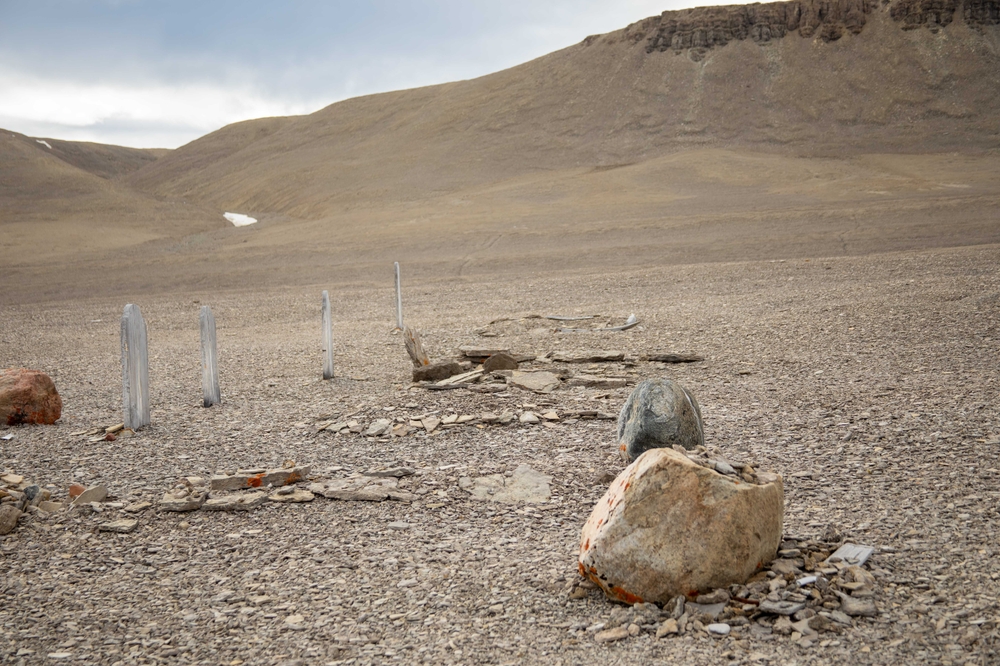Cannibalization May Have Been a Last Resort for Survivors of the Lost John Franklin Expedition
Posted on Categories Discover Magazine

The lost expedition of John Franklin is a classic tale of traveling gone wrong. When the British Royal Navy officer set out from England with two ships in 1845, their goal was to forge a way through the Arctic Ocean to open up the Northwest Passage. Unfortunately, none of the 129 men who sailed out with the HMS Erebus and the HMS Terror ever returned.
Reports from rescue missions, Inuit in the area and subsequent forensic and archaeological work on human and nonhuman remains have since pieced together part of the story, which includes ships stuck in winter ice, food gone bad, a desperate trip overland, and the likelihood of cannibalism.
Now, recent genetic work in a study published in the Journal of Archaeological Science: Reports, has identified some of the bones discovered on King William Island in Nunavut as those of James Fitzjames, a commanding officer on the expedition, who had apparently been cannibalized.
“I can’t possibly put myself in that situation where I could imagine what they were going through,” says Douglas Stenton, an archaeologist with the University of Waterloo in Canada.
What Was the Franklin Expedition?
Back in 1845, nobody had traversed the Northwest Passage — essentially moving between the Atlantic and Pacific oceans via the Arctic Ocean — by boat. Franklin’s expedition was supposed to change that. They were well equipped with two reinforced boats and supposedly enough food to last for three years.
Franklin and his crew had plenty of experience. Franklin had already been on three expeditions in the Arctic. On one of these trips, he may have even been involved in one of the first iterations of ice hockey on the ice at Great Bear Lake in the Northwest Territories. Francis Crozier, the second in command and captain of the HMS Terror, had also been on various expeditions in the Arctic and Antarctic.
All their experience came to nought though, for various reasons. Both ships became trapped in the ice near King William Island, and the crew spent two winters around the area before survivors, which didn’t include Franklin himself, set off for the Canadian mainland.
Read More: 4 Famous Shipwrecks That You Can Visit
The Discovery of the Remains of James Fitzjames
Inuit first discovered the remains of at least 13 of these crew members on King William Island that had evidence of cannibalism, and then again discovered by archaeologist Anne Keenleyside in 1993.
There were 451 bones at the site, and some of these included mandibles with molars, which are good at preserving relatively intact DNA. Researchers analyzed the DNA of those bones that they could, but to discover who they were, they still needed to compare it to living relatives.
In 2021, Stenton and Keenleyside had identified one of the skulls as belonging to John Gregory, an engineer on HMS Erebus, by matching DNA extracted from remains with the DNA of a living relative.
Subsequently, more potential relatives of lost members of the Franklin expedition contacted Stenton and his colleagues. However, many of them weren’t close enough relatives. The team needed DNA from someone who was descended directly from one of the crew’s male or female ancestors, respectively.
But Fabiënne Tetteroo’s genealogical research revealed that a relative named Nigel Gambier shared a direct paternal ancestor with Fitzjames. Gambier shared his DNA sample with the researchers, and in the recent study, they confirmed the DNA of Fitzjames in some of the remains.
Fitzjames was third in command of the expedition, and the captain of the HMS Erebus. He came from a proud tradition of naval service, Stenton says, having entered the navy at 12 or 13, as was common at the time.
Fitzjames outlived Franklin by roughly a year or so, though the date of his death wasn’t clear.
Read More: No One Knows How Many Shipwrecks Exist, So How Do We Find Them?
Cannibalization as a Last Resort
Inuit oral history dating back to the 19th century reported that to survive, some of the crew members of the Franklin expedition had resorted to cannibalism.
Keenleyside and other researcher’s archaeological work seemed to confirm this, as some of the bones had cut marks consistent with meat extraction. The bones of Fitzjames had those same cut marks.
While many may see this abhorrent, Stenton tries to put himself in the shoes of the crew members who were trying to survive.
“You have this situation where you had a primal instinct, it overwhelms inhibition. Who knows what anyone would do in this case,” Stenton says.
Ultimately, it didn’t seem to help, as none of the crew were known to survive. “[Cannibalism] only prolonged their suffering,” Stenton says.
Since the recent publication of these results, Stenton says that more relatives of lost crew members have contacted his team. One of these, he says, is promising.
“We’re really hopeful that we can identify some more,” he says.
Read More: Living Through the Donner Party
Article Sources
Our writers at Discovermagazine.com use peer-reviewed studies and high-quality sources for our articles, and our editors review for scientific accuracy and editorial standards. Review the sources used below for this article:
Joshua Rapp Learn is an award-winning D.C.-based science writer. An expat Albertan, he contributes to a number of science publications like National Geographic, The New York Times, The Guardian, New Scientist, Hakai, and others.